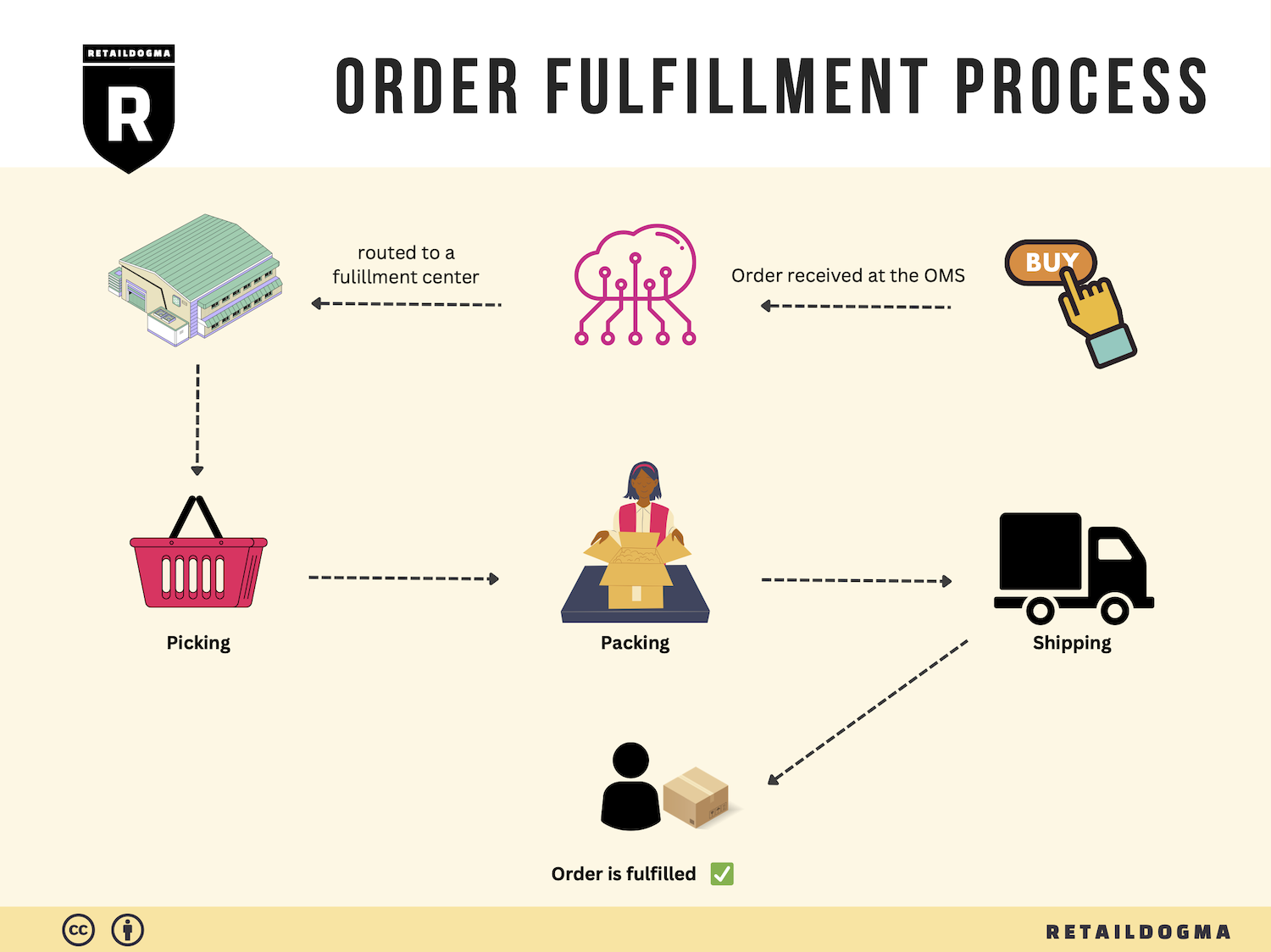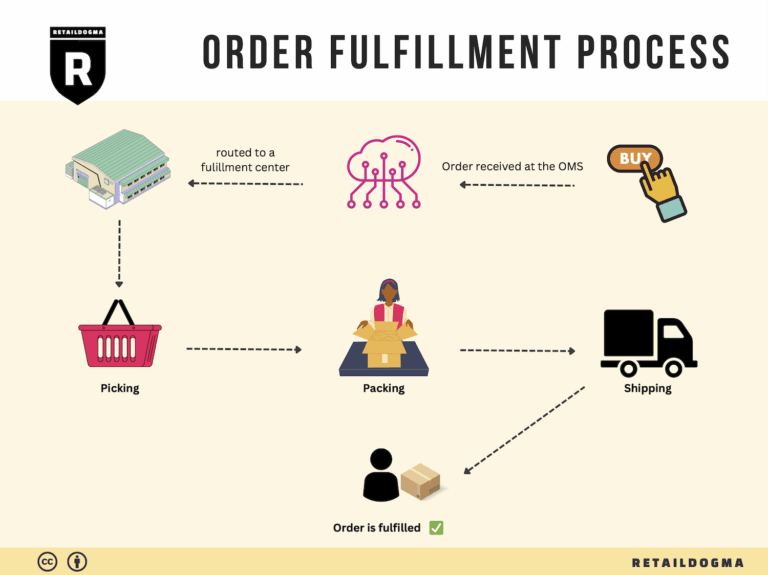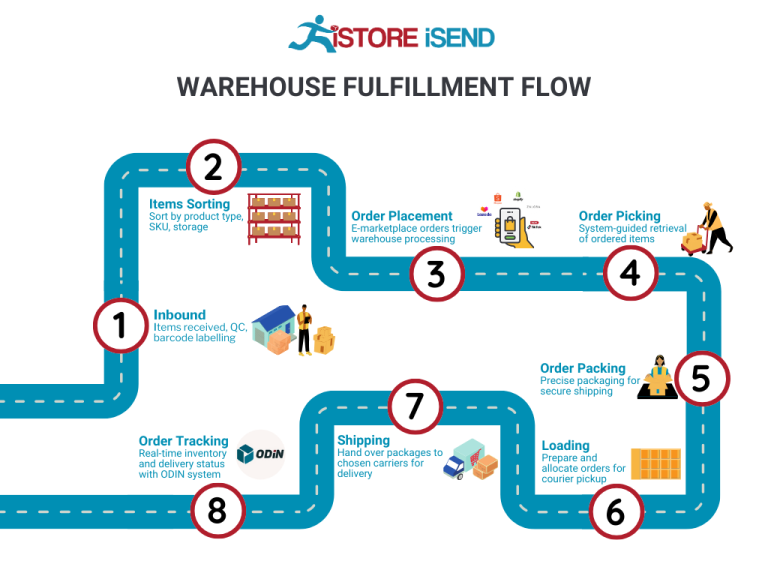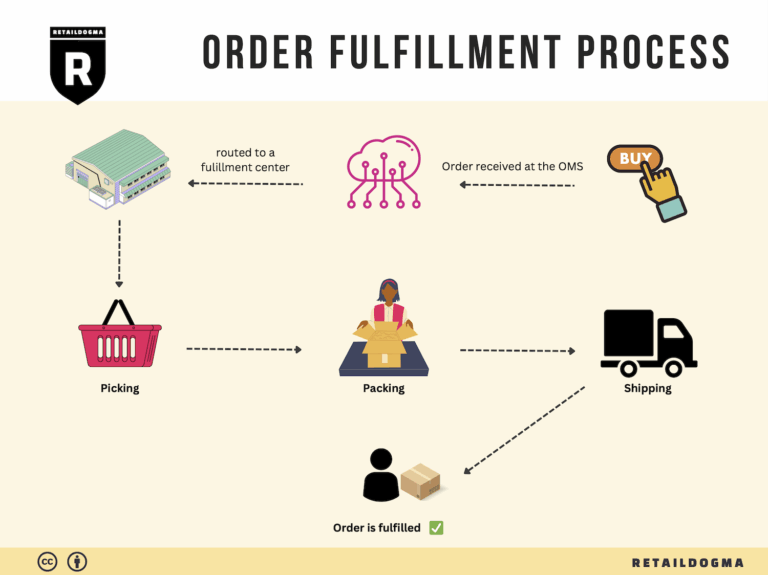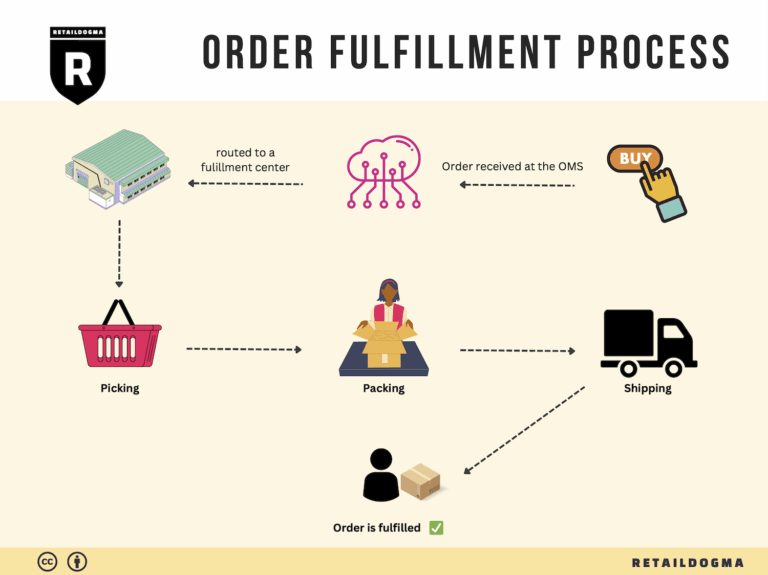How Order Fulfillment Works: A Step-by-Step Guide for Businesses
What is E-commerce Fulfillment? An Introduction for Growing Businesses
As an e-commerce business grows, the thrill of increased sales can quickly turn into the overwhelming task of managing packing and shipping orders. For many entrepreneurs, the logistics of fulfillment can feel like a daunting mountain to climb. Balancing inventory management, ensuring timely deliveries, and maintaining customer satisfaction often leads to sleepless nights and immense stress.
Fulfillment, in its simplest form, refers to the entire process of getting a product from your warehouse to your customer’s doorstep. It encompasses everything from receiving inventory and storing it, to picking and packing orders, and finally shipping them out. As your business scales, mastering this process becomes crucial not only for operational efficiency but also for sustaining customer loyalty.
This guide aims to demystify e-commerce fulfillment for growing businesses by exploring various fulfillment models, such as Third-Party Logistics (3PL) and Fulfillment by Amazon (FBA). Each model has unique benefits and challenges, and understanding these differences can help you choose the right approach for your business.
We will also delve into the core services typically included in fulfillment solutions, such as inventory management, order processing, and returns handling. These services are essential for creating a seamless shopping experience for your customers, which can significantly impact your brand’s reputation and bottom line.
Choosing the right fulfillment partner can be one of the most critical decisions you make as a business owner. This guide will provide insights into what to look for in a partner, including technology capabilities, scalability, and customer service.
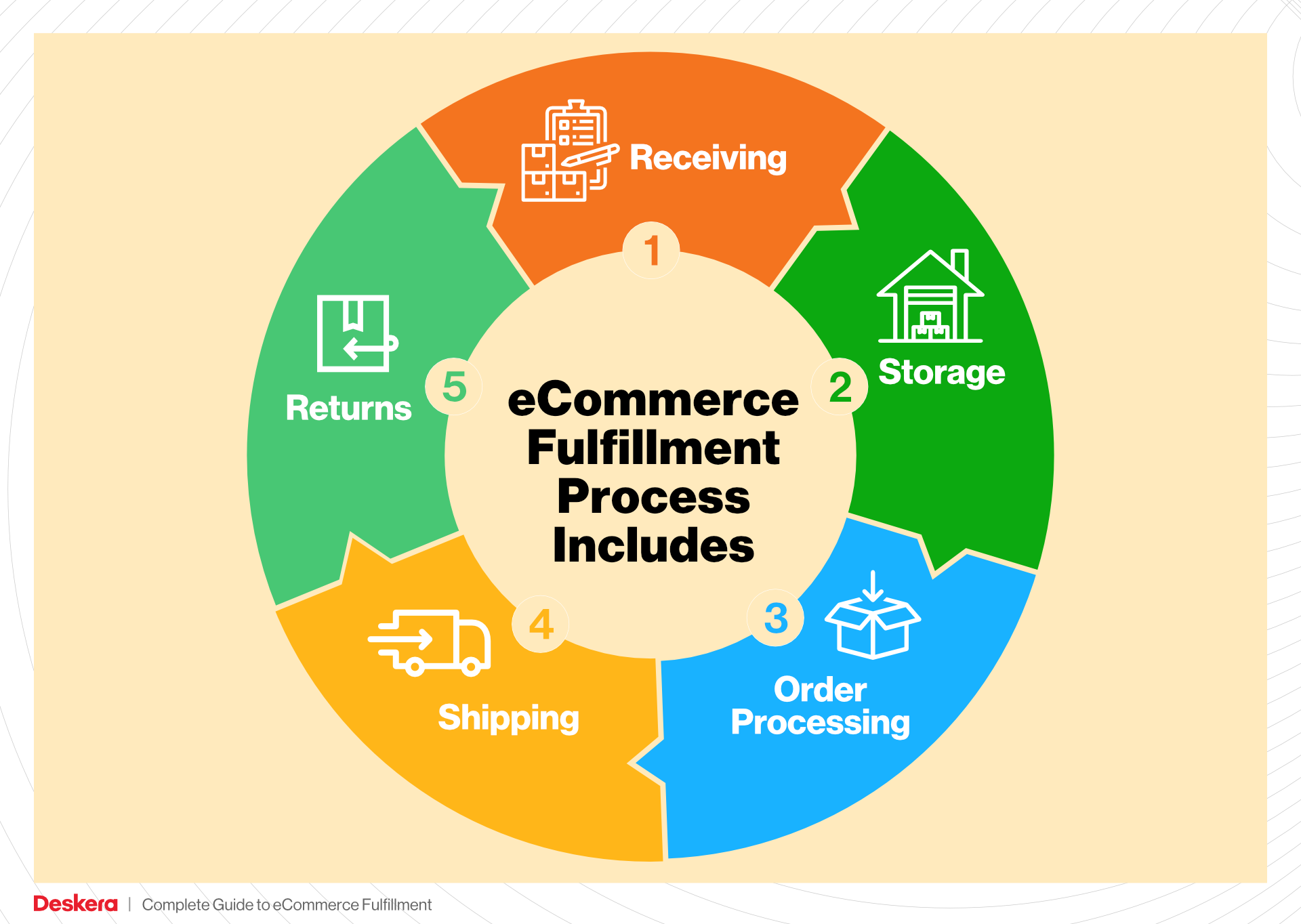
Pricing is another vital aspect that cannot be overlooked. We will break down the factors that influence fulfillment costs and offer strategies for keeping expenses in check while ensuring quality service.
Ultimately, the goal of this guide is to empower you with the knowledge needed to make informed decisions about your logistics. By understanding the intricacies of e-commerce fulfillment, you can streamline your operations, enhance customer satisfaction, and focus on what you do best: growing your business.
What You’ll Learn In This Guide
- What is E-commerce Fulfillment? An Introduction for Growing Businesses
- The Order Fulfillment Process: From ‘Buy’ Button to Customer’s Door
- Comparing Fulfillment Models: In-House vs. 3PL vs. Dropshipping
- A Deep Dive into Amazon FBA: Pros, Cons, and Who It’s For
- Core Services Offered by Fulfillment Centers
- How to Choose a Fulfillment Partner: A 6-Point Checklist
- Understanding Fulfillment Pricing: A Breakdown of Common Fees
- Frequently Asked Questions (FAQs) about Fulfillment
- Conclusion: Is Outsourcing Fulfillment the Right Move for Your Business?
- Important Disclaimer
The Order Fulfillment Process: From ‘Buy’ Button to Customer’s Door
1. Receiving Inventory
The order fulfillment process begins with receiving inventory at the fulfillment center. This involves accepting products from suppliers and ensuring they meet quality standards. Key activities include checking delivery quantities against purchase orders and inspecting for damages. A crucial term associated with this step is SKU (Stock Keeping Unit), which is a unique identifier for each product variant.
Effective inventory management at this stage is vital as it sets the foundation for the entire fulfillment process. Accurate receiving minimizes discrepancies that could lead to stockouts or overstock situations, affecting customer satisfaction. Businesses should employ a systematic approach, possibly leveraging technology such as barcode scanners to enhance accuracy and efficiency during this phase.
2. Warehouse Storage
Once inventory is received and verified, it is moved to warehouse storage. This step involves organizing products in a manner that facilitates easy access and efficient order processing. Products are typically stored based on their SKU, size, or sales velocity, with high-demand items placed in easily accessible locations.
Proper warehouse management is critical for optimizing space and ensuring quick retrieval of items when orders come in. The use of warehouse management systems (WMS) can greatly enhance this process by providing real-time data on inventory levels and locations. An organized storage system not only speeds up the picking process but also reduces the likelihood of errors, ensuring that customers receive the correct items.
3. Order Picking
With inventory securely stored, the next step is order picking, where items are selected from the warehouse based on customer orders. This process can be done manually or through automated systems. A vital component of order picking is the pick list, which is a document or digital display that lists all items needed for an order, including their locations within the warehouse.
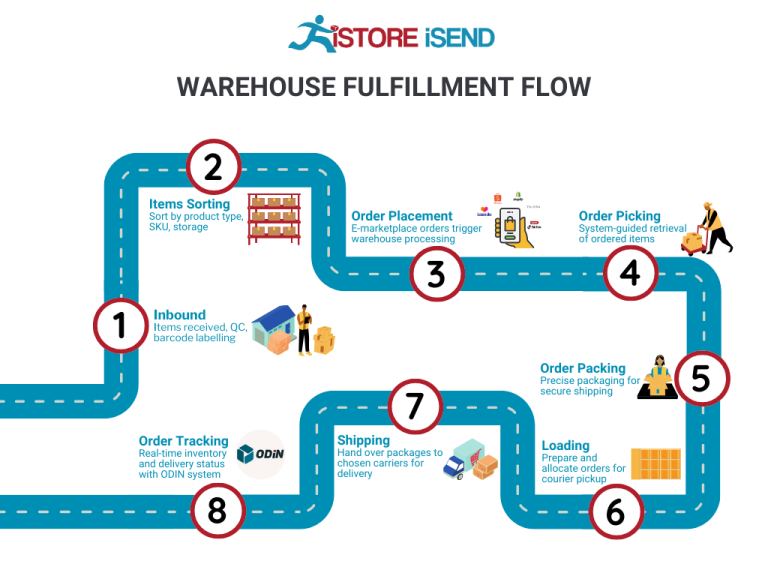
The efficiency of the picking process directly impacts delivery times. Businesses should consider implementing strategies such as batch picking (grouping multiple orders for simultaneous picking) or zone picking (assigning specific areas of the warehouse to individual pickers) to enhance productivity. The goal here is to minimize the time spent moving through the warehouse while maximizing accuracy.
4. Order Packing
After items are picked, they proceed to order packing. This step is crucial for ensuring that products are securely packaged for transit, which helps prevent damage during shipping. The packing process often involves selecting appropriate packaging materials and including necessary documentation, such as invoices or return slips.
Key to this step is understanding dimensional weight pricing, which affects shipping costs based on package dimensions rather than just weight. Proper packing not only protects items but also optimizes shipping costs. Businesses should invest in training staff on effective packing techniques and consider using automated packing solutions to streamline the process and reduce human error.
5. Shipping & Delivery
The final step in the fulfillment process is shipping and delivery. Once an order is packed, it is labeled and handed over to a carrier for transportation to the customer. This phase is critical as it directly affects customer satisfaction and overall delivery performance.
Businesses should track shipments using tracking numbers, which allow both the company and customers to monitor the order’s journey. Choosing the right shipping partners and methods based on delivery speed, cost, and reliability is essential. Additionally, offering multiple shipping options can cater to diverse customer preferences, enhancing the overall shopping experience.
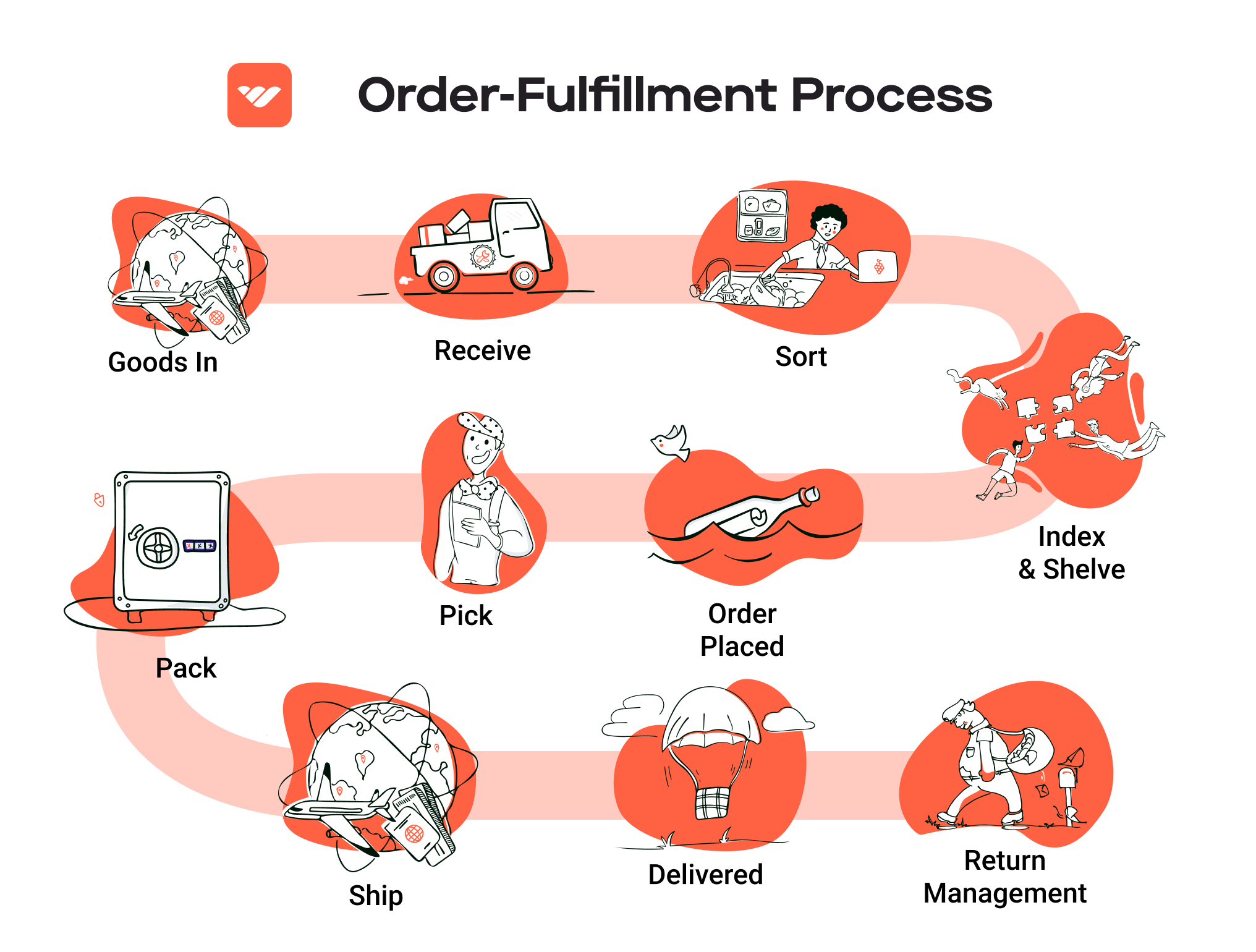
In summary, an efficient order fulfillment process from receiving inventory to shipping and delivery is paramount for e-commerce success. By optimizing each step, businesses can improve operational efficiency, enhance customer satisfaction, and ultimately drive sales growth.
Comparing Fulfillment Models: In-House vs. 3PL vs. Dropshipping
Fulfillment Model Comparison
| Model | Who Handles Inventory | Best For (Business Stage) | Key Advantage | Key Disadvantage |
|---|---|---|---|---|
| In-House Fulfillment | Business owns and manages inventory | Established businesses with stable sales | Greater control over inventory and processes | High overhead costs and labor requirements |
| Third-Party Logistics (3PL) | External provider manages inventory | Growing businesses seeking scalability | Access to expertise and advanced technology | Less control over the fulfillment process |
| Dropshipping | Supplier ships directly to customers | Startups and small businesses with limited resources | Low startup costs and no inventory risk | Lower margins and potential supply chain issues |
In-House Fulfillment
In-house fulfillment involves managing the entire inventory and logistics process within your own facilities. This model is often favored by established businesses that have a consistent and predictable sales volume. The key advantage of in-house fulfillment is the control it affords over inventory management, order processing, and customer service. Companies can implement their own standards for quality assurance, speed of delivery, and customer interaction, leading to a potentially enhanced customer experience. However, this model also comes with significant disadvantages. The costs of warehousing, staffing, and maintaining inventory can be substantial, particularly for businesses with fluctuating sales. Additionally, the need for skilled labor and management can complicate operations, making it a less viable option for startups or businesses looking to scale quickly without heavy investments.
Third-Party Logistics (3PL)
Third-party logistics (3PL) providers handle inventory storage, order fulfillment, and shipping on behalf of businesses. This model is particularly beneficial for growing businesses that need to scale operations without the burden of managing logistics directly. Partnering with a 3PL allows companies to leverage the provider’s expertise, technology, and established distribution networks, which can lead to improved efficiency and reduced shipping times. One of the key advantages of using a 3PL is the flexibility it offers; businesses can adjust their logistics needs based on seasonal demand without the need to invest in additional infrastructure. However, the downside of this model is the loss of control over the fulfillment process. Relying on a third party can lead to inconsistencies in service quality, which may negatively impact customer satisfaction. Furthermore, businesses must ensure their 3PL provider aligns with their brand values and operational standards to avoid potential pitfalls.
Dropshipping
Dropshipping is a fulfillment model where the retailer does not keep products in stock. Instead, when a retailer sells a product, they purchase the item from a third-party supplier who then ships it directly to the customer. This model is ideal for startups and small businesses with limited resources, as it requires minimal upfront investment and eliminates the risk of holding inventory. The primary advantage of dropshipping is the low barrier to entry, allowing entrepreneurs to enter the e-commerce space without significant financial commitment. However, dropshipping also presents challenges. The profit margins can be lower compared to other models, and reliance on suppliers can lead to supply chain issues, such as stock shortages and shipping delays. Additionally, businesses have less control over product quality and fulfillment speed, which can impact customer satisfaction and brand reputation. As such, dropshipping requires careful supplier selection and proactive inventory management to mitigate potential drawbacks.
Conclusion
Selecting the right fulfillment model is critical for the success of any e-commerce business. Each model—In-House Fulfillment, Third-Party Logistics, and Dropshipping—offers distinct advantages and disadvantages that cater to different business needs and stages. By carefully evaluating your business objectives, resources, and customer expectations, you can choose the fulfillment strategy that best aligns with your growth ambitions and operational capabilities. Understanding these models will empower e-commerce business owners to make informed decisions that enhance efficiency, control costs, and ultimately drive customer satisfaction.
A Deep Dive into Amazon FBA: Pros, Cons, and Who It’s For
Understanding Fulfillment by Amazon (FBA)
Fulfillment by Amazon (FBA) is a service that allows e-commerce sellers to store their products in Amazon’s fulfillment centers. Amazon takes care of storage, packaging, shipping, and customer service for these products, enabling sellers to focus on other aspects of their business. This service has gained immense popularity among e-commerce businesses due to its efficiency and the trust that comes with the Amazon brand.
How FBA Works
-
Setup: Sellers begin by creating an Amazon seller account and enrolling in FBA. They then create product listings and prepare their inventory for shipment to Amazon’s fulfillment centers.
-
Inventory Shipment: Sellers ship their products to designated Amazon fulfillment centers. Amazon provides guidelines on packaging and labeling to ensure smooth processing.
-
Storage: Once received, Amazon stores the products in its warehouses. Sellers can monitor their inventory levels through the Amazon seller dashboard.
-
Order Fulfillment: When a customer places an order for a product listed under FBA, Amazon picks, packs, and ships the item on behalf of the seller. This process typically allows for fast shipping, often within two days for Prime members.
-
Customer Service: Amazon handles all customer inquiries and returns, providing a seamless experience for both sellers and buyers.
-
Payment: After the sale, Amazon disburses payment to the seller, deducting applicable fees for the FBA service.
Pros of Using FBA
Prime Eligibility
One of the most significant advantages of using FBA is the eligibility for Amazon Prime. Products fulfilled by Amazon are automatically eligible for Prime, which provides sellers access to a vast customer base willing to pay for expedited shipping. This can lead to higher sales volumes as customers often prefer Prime-eligible items for their faster delivery options.
Customer Trust
Amazon has established itself as a trusted brand in the e-commerce space. By using FBA, sellers can leverage this trust. Customers are more likely to purchase products from sellers who use FBA, as they benefit from Amazon’s return policies and customer service. This added layer of trust can lead to increased conversion rates.
Multi-Channel Fulfillment
FBA is not limited to sales on Amazon alone. Sellers can also use FBA for orders from their own websites or other marketplaces. This multi-channel fulfillment capability allows sellers to streamline their operations and manage inventory across different platforms efficiently.
Cons of Using FBA
High Fees
While FBA offers many benefits, it also comes with substantial costs. Sellers must pay storage fees for the products stored in Amazon’s warehouses, as well as fulfillment fees for each item sold. These fees can add up quickly, especially for sellers with low-margin products or those holding excess inventory.
Strict Inventory Rules
Amazon imposes strict inventory management rules that sellers must follow. For instance, sellers need to ensure that their inventory levels align with Amazon’s guidelines to avoid extra fees or penalties. This can be challenging for businesses that experience fluctuating demand or seasonal sales.
Commingling Risks
FBA uses a commingled inventory system, meaning that products from different sellers can be stored together in Amazon’s warehouses. While this can help streamline operations, it also presents risks. If a product is defective or damaged, it can be challenging to trace the issue back to the original seller. This lack of control can lead to negative reviews and customer dissatisfaction.
Who is FBA Best For?
Fulfillment by Amazon is an excellent option for various types of sellers, particularly:
-
Small to Medium-Sized Businesses: Businesses looking to scale without investing heavily in logistics can benefit from FBA’s infrastructure. It allows them to reach a broader audience while minimizing operational overhead.
-
Sellers with High Sales Volume: Those who can sell products consistently and quickly will find that the benefits of FBA, such as Prime eligibility and customer trust, outweigh the costs associated with fees.
-
Brands with Seasonal Products: Businesses that experience seasonal spikes in demand can use FBA to handle fulfillment during peak seasons without needing to maintain a large warehouse or staff.
-
Entrepreneurs Seeking Growth: New sellers looking to establish a brand and grow their online presence can leverage FBA to gain visibility and credibility in a competitive marketplace.
In conclusion, while Fulfillment by Amazon offers an impressive array of advantages that can significantly enhance an e-commerce business’s capabilities, it is essential to weigh these benefits against the potential drawbacks. Sellers must consider their unique business needs, inventory management practices, and financial margins to determine if FBA is the right fit for their growth strategy.
Core Services Offered by Fulfillment Centers
Inventory Management & Warehousing
Inventory management and warehousing are foundational services provided by fulfillment centers, ensuring that e-commerce businesses maintain optimal stock levels while minimizing costs. Fulfillment centers utilize advanced inventory management systems to track products in real-time, which allows businesses to have accurate visibility of their stock.
Benefits:
1. Real-Time Tracking: Businesses can monitor inventory levels continuously, reducing the risk of stockouts or overstock situations. This capability is essential for maintaining customer satisfaction, as it ensures that products are available when needed.
2. Space Optimization: Fulfillment centers are equipped with specialized storage solutions that maximize space efficiency. This enables businesses to store more products without the need for additional warehouse space, which can be a significant cost-saving measure.
3. Scalability: As a business grows, its inventory needs will change. Fulfillment centers provide the flexibility to scale operations up or down based on demand without the need for major capital investment in additional warehousing facilities.
Pick and Pack Services
Pick and pack services are integral to the order fulfillment process, where items are selected from inventory (picked) and then packaged for shipment (packed). Fulfillment centers employ efficient picking methods, such as batch picking or wave picking, to optimize the order processing time.
Benefits:
1. Speed and Accuracy: By utilizing trained staff and automated systems, fulfillment centers can significantly reduce the time it takes to fulfill orders. This efficiency translates to faster shipping times, which is crucial in meeting customer expectations for quick delivery.
2. Customization: Fulfillment centers can accommodate specific packing requirements, such as branded packaging or special inserts, enhancing the customer experience. Customization can help reinforce brand identity and improve customer loyalty.
3. Error Reduction: Advanced technology, such as barcode scanning, minimizes the chances of picking errors. This accuracy leads to fewer returns and enhances customer satisfaction, as customers receive the correct items as ordered.
Kitting and Assembly
Kitting and assembly services involve the grouping of multiple products into a single package or kit. This is particularly useful for e-commerce businesses that sell products that are often purchased together or require assembly before use.
Benefits:
1. Enhanced Customer Experience: By providing kits that include everything a customer needs, businesses can simplify the purchasing process, making it more appealing. For example, a DIY furniture company might offer a kit that includes all necessary tools and parts, making it easier for customers to complete their projects.
2. Inventory Management Efficiency: Kitting helps streamline inventory management by reducing the number of individual SKUs. This simplification can lead to lower holding costs and easier tracking of inventory.
3. Value Addition: Kitted products can be sold at a premium price, as they often provide added convenience to customers. This approach not only increases sales but can also enhance the perceived value of the products offered.
Returns Management (Reverse Logistics)
Returns management, or reverse logistics, is a critical service offered by fulfillment centers, addressing the complexities of handling product returns. A well-structured returns process is essential for maintaining customer satisfaction and loyalty in the e-commerce sector.
Benefits:
1. Streamlined Processes: Fulfillment centers implement efficient return processes that simplify the return experience for customers. This includes providing return labels, processing returns quickly, and updating inventory in real-time, which can improve customer trust and retention.
2. Cost Efficiency: By managing returns in-house, fulfillment centers can reduce the costs associated with reverse logistics. They are equipped to handle inspections, refurbishments, or restocking of returned items, thereby minimizing losses.
3. Data Insights: Returns management provides valuable data on customer behavior and product performance. Analyzing return reasons can help businesses identify quality issues or gaps in their offerings, leading to improved product development and marketing strategies.
In summary, the core services offered by fulfillment centers, including inventory management and warehousing, pick and pack services, kitting and assembly, and returns management, provide e-commerce businesses with the infrastructure and expertise needed to scale efficiently. By leveraging these services, businesses can enhance operational efficiency, improve customer satisfaction, and ultimately drive sales growth.
How to Choose a Fulfillment Partner: A 6-Point Checklist
Location & Warehouse Network
Importance:
The geographical location of your fulfillment partner is crucial for optimizing shipping times and costs. A partner with strategically placed warehouses can significantly enhance your delivery speed, which is vital for customer satisfaction and retention.
Key Questions to Ask:
– Where are your warehouses located, and how does this impact shipping times to my primary customer base?
– What is your average shipping time to various regions?
– How many warehouses do you operate, and how are they connected?
Technology & Integrations
Importance:
An efficient fulfillment operation relies heavily on technology. Your partner should offer robust inventory management systems that integrate seamlessly with your e-commerce platform. This ensures real-time tracking, updates on stock levels, and streamlined order processing.
Key Questions to Ask:
– What technology do you use for inventory management and order processing?
– Can your systems integrate with my existing e-commerce platform (e.g., Shopify, WooCommerce, Amazon)?
– Do you provide tracking capabilities for customers and for my internal management?
Specializations (e.g., Cold Storage, Oversized Items)
Importance:
Depending on your product offerings, you may need a fulfillment partner with specific capabilities. For example, businesses dealing with perishable goods require temperature-controlled storage, while those selling bulky items may need specialized handling and shipping solutions.
Key Questions to Ask:
– Do you have experience with my type of products (e.g., perishables, oversized items, fragile products)?
– What specialized services do you offer (e.g., cold storage, kitting, or assembly)?
– Can you handle returns and damaged items effectively?
Scalability & Capacity
Importance:
As your business grows, your fulfillment needs will change. A good partner should be able to scale with you, whether that means increasing storage space, handling more orders, or expanding into new regions.
Key Questions to Ask:
– How do you handle seasonal fluctuations in order volume?
– What is your capacity for scaling operations, and how quickly can you adapt to increased demand?
– Are there any limits to the number of SKUs or orders you can handle?
Pricing and Contracts
Importance:
Understanding the pricing structure and contract terms is essential to ensure that the partnership is financially viable. Transparent pricing will help you avoid unexpected costs that could impact your margins.
Key Questions to Ask:
– What is your pricing model (e.g., per order, per item, flat fee)?
– Are there any hidden fees (e.g., storage fees, handling fees, minimum order quantities)?
– What are the terms of the contract, and is there flexibility for renegotiation as my business grows?
Customer Support & Reviews
Importance:
Reliable customer support is a key factor in maintaining a smooth operation. Issues can arise at any time, and having responsive support can mitigate potential disruptions. Additionally, checking reviews and testimonials can provide insight into the partner’s reliability and service quality.
Key Questions to Ask:
– What customer support services do you offer (e.g., dedicated account manager, 24/7 support)?
– How do you handle issues related to order fulfillment, such as errors or delays?
– Can you provide references or case studies from similar businesses that have worked with you?
Conclusion
Choosing the right fulfillment partner is a critical decision that can significantly impact your e-commerce operations. By using this checklist, you can ensure that you consider all essential factors, from location to customer support, to find a partner that aligns with your business goals. Taking the time to evaluate potential partners thoroughly will position your business for growth and success in the competitive e-commerce landscape.
Understanding Fulfillment Pricing: A Breakdown of Common Fees
Initial Setup Fees
Initial setup fees are one-time charges incurred when you first start using a fulfillment service. These fees can cover various aspects, such as account creation, onboarding, and any necessary integrations with your existing e-commerce platforms. The exact amount varies depending on the fulfillment provider and the complexity of the services required.
Typically, providers may charge a flat fee or a tiered structure based on the number of products you intend to store and fulfill through their center. For example, if you’re integrating with multiple sales channels or require custom software solutions, expect higher initial fees due to the additional technical support and configuration involved.
Receiving Fees
Receiving fees are charged for the process of accepting and logging your inventory into the fulfillment center. This fee is usually calculated based on the volume of goods received—often measured in units or pallets.
For instance, a provider might charge a standard fee for every 100 units received or a set fee per pallet. This fee accounts for the labor and resources needed to inspect, sort, and store incoming inventory. Understanding the receiving fees is crucial, especially if you’re frequently restocking or launching new products, as these costs can add up quickly.
Storage Fees (per pallet/bin)
Storage fees are recurring charges for keeping your products in the fulfillment center. These fees can vary significantly based on the storage model used by the provider—either by pallet, bin, or cubic foot.
Most fulfillment centers will charge a monthly fee per pallet or bin. For example, a typical fee might range from $15 to $30 per pallet per month, depending on the location and the facility’s operational costs. If you have a large volume of inventory, it’s essential to monitor these fees closely, as they can impact your overall profitability. Additionally, some providers may offer tiered pricing where the cost per pallet decreases as you store more pallets, which can be beneficial for scaling businesses.
Pick & Pack Fees (per item/order)
Pick and pack fees are charged for the labor involved in retrieving items from storage and preparing them for shipment. This fee can be structured in several ways, including a flat fee per order and additional charges based on the number of items per order.
For instance, a provider might charge a base fee of $2.50 per order, plus $0.50 for each item picked. This model incentivizes businesses to streamline their orders and can lead to significant savings if you can consolidate shipments. Understanding how pick and pack fees are calculated will help you optimize your inventory and order management practices.
Shipping Fees
Shipping fees encompass the costs associated with transporting your products to customers. These fees can vary based on several factors, including package dimensions, weight, destination, and shipping speed. Most fulfillment centers will have partnerships with major carriers, allowing them to provide discounted shipping rates.
Shipping fees are typically calculated based on the service level chosen (standard, expedited, etc.) and the characteristics of the shipment. It’s important to compare the shipping options available through your fulfillment provider, as this can significantly affect your overall cost and delivery times.
Tips for Getting an Accurate Quote
To get an accurate quote for fulfillment services, consider the following tips:
-
Provide Detailed Information: Clearly outline your product types, expected order volumes, and any specific requirements you may have. This will help the provider tailor their quote to your business needs.
-
Ask About Hidden Fees: Inquire about any additional fees that might not be included in the initial quote, such as return processing fees or long-term storage fees. Understanding the full scope of potential costs will help you budget effectively.
-
Evaluate Multiple Providers: Don’t settle for the first quote you receive. Comparing quotes from multiple fulfillment centers can give you a better idea of the market rate and help you identify the best value.
-
Consider Seasonal Fluctuations: If your business is seasonal, ask how the provider handles fluctuations in volume during peak times. This can affect pricing and service levels.
-
Negotiate Terms: Many fulfillment centers are open to negotiation, especially if you can commit to a long-term agreement or higher volume. Don’t hesitate to discuss terms that could lead to cost savings.
By understanding these common fulfillment pricing models and following these tips, you can make informed decisions that enhance your e-commerce operations while managing costs effectively.
Frequently Asked Questions (FAQs) about Fulfillment
1. What is the Amazon Fulfillment Center DAE7?
The Amazon Fulfillment Center DAE7, located in North Versailles, PA, serves as a critical hub in Amazon’s logistics network. It is designed to efficiently process and ship a wide variety of products, ensuring quick and reliable delivery to customers. This facility supports a diverse range of items, from college essentials to personal care products, reflecting Amazon’s commitment to customer satisfaction.
2. How does the fulfillment process work at Amazon DAE7?
At Amazon DAE7, the fulfillment process begins when a customer places an order. The order is received and processed through Amazon’s sophisticated inventory management system. Products are then picked from the warehouse, packed, and shipped to the customer, often within a short timeframe. The facility is equipped with advanced technology to streamline these steps, ensuring efficiency and accuracy.
3. What is the difference between a warehouse and a fulfillment center?
While both warehouses and fulfillment centers are used for storing goods, their functions differ significantly. A warehouse primarily focuses on storage and inventory management, often serving businesses that need to hold stock until it’s sold. In contrast, a fulfillment center, like Amazon DAE7, is designed to handle the entire order fulfillment process, including picking, packing, shipping, and sometimes returns management, directly to the customer.
4. What is a third-party logistics provider (3PL)?
A third-party logistics provider (3PL) is a company that offers logistics services to businesses, including warehousing, fulfillment, and shipping. 3PLs help companies manage their supply chain without needing to invest in their own logistics infrastructure. Amazon DAE7 can be considered a part of Amazon’s own logistics solution, but many e-commerce businesses partner with 3PLs to leverage similar services for their operations.
5. How much do fulfillment services cost?
The cost of fulfillment services varies widely based on several factors, including the volume of orders, the types of products, and the specific services required (e.g., storage, packing, and shipping). Generally, fulfillment centers charge fees based on storage space used, order processing, and shipping costs. Businesses should carefully evaluate their fulfillment needs and compare providers to find the most cost-effective solution.
6. What types of products are handled at the Amazon Fulfillment Center DAE7?
DAE7 handles a diverse array of products, including consumer electronics, household goods, personal care items, and seasonal merchandise. The facility is designed to accommodate a wide range of categories, ensuring that it can meet the varied demands of Amazon’s customer base.
7. What technology does Amazon DAE7 use for fulfillment?
Amazon DAE7 employs advanced technology such as robotics, artificial intelligence, and automated sorting systems to enhance operational efficiency. These technologies enable faster processing of orders, more accurate inventory management, and improved shipping logistics, allowing Amazon to maintain its high standards for customer service.
8. How does Amazon ensure timely deliveries from DAE7?
To ensure timely deliveries, Amazon utilizes a combination of strategic location, advanced logistics technology, and efficient inventory management. The DAE7 facility is strategically located to serve a broad customer base, and Amazon’s sophisticated algorithms optimize delivery routes and schedules, minimizing shipping times.
9. Can small businesses use Amazon DAE7 for fulfillment?
Yes, small businesses can leverage Amazon’s fulfillment services through the Fulfillment by Amazon (FBA) program. This program allows businesses to store their products in Amazon’s fulfillment centers, including DAE7, and utilize Amazon’s logistics network for order processing and shipping, thereby gaining access to Amazon’s vast customer base.
10. What are the benefits of using Amazon DAE7 for fulfillment?
Utilizing Amazon DAE7 for fulfillment offers several benefits, including:
- Speed: Quick processing and shipping times, often within one or two days.
- Scalability: Ability to scale operations up or down based on demand.
- Access to Technology: Advanced logistics technology that enhances efficiency.
- Customer Trust: Leveraging Amazon’s brand reputation for reliability and service.
- Convenience: Simplified logistics management, allowing businesses to focus on growth.
These advantages make Amazon DAE7 an attractive option for e-commerce businesses looking to enhance their fulfillment capabilities.
Conclusion: Is Outsourcing Fulfillment the Right Move for Your Business?
Evaluating the Benefits of Outsourcing Fulfillment
Outsourcing fulfillment can be a game-changer for e-commerce businesses looking to scale. By leveraging a fulfillment service, you can significantly save time—allowing your team to focus on core business activities such as marketing and customer engagement rather than the complexities of logistics. This shift in focus can lead to improved operational efficiency and a better overall customer experience.
Scalability is another compelling advantage. As your business grows, so too do the demands on your shipping and inventory management systems. A robust fulfillment partner, like the Amazon Fulfillment Center-DAE7, offers the infrastructure and resources necessary to handle spikes in order volume without compromising service quality. This means you can confidently expand your product offerings or enter new markets, knowing that your fulfillment needs are managed by experts in the field.
Moreover, expertise plays a crucial role in the decision to outsource. Fulfillment centers bring a wealth of knowledge and experience in logistics, inventory management, and shipping regulations, which can be daunting for businesses operating independently. Partnering with a fulfillment service not only ensures that your products are handled with care but also enhances compliance with shipping standards and best practices.
Choosing the right fulfillment partner is critical for your growth trajectory. It’s essential to conduct thorough research and align with a provider that understands your business needs and can adapt to the evolving landscape of e-commerce.
Call to Action
If you’re considering whether outsourcing fulfillment is the right move for your business, start by auditing your current shipping process. Evaluate your operational pain points and growth objectives. Understanding your logistics challenges can illuminate whether a fulfillment partnership will enhance your efficiency and scalability. Take that first step towards optimizing your operations today!
Important Disclaimer
⚠️ Important Disclaimer
The information in this guide is for educational purposes. Fulfillment services, pricing, and platform features change frequently. Always conduct your own due diligence and consult with providers directly before making business decisions.
